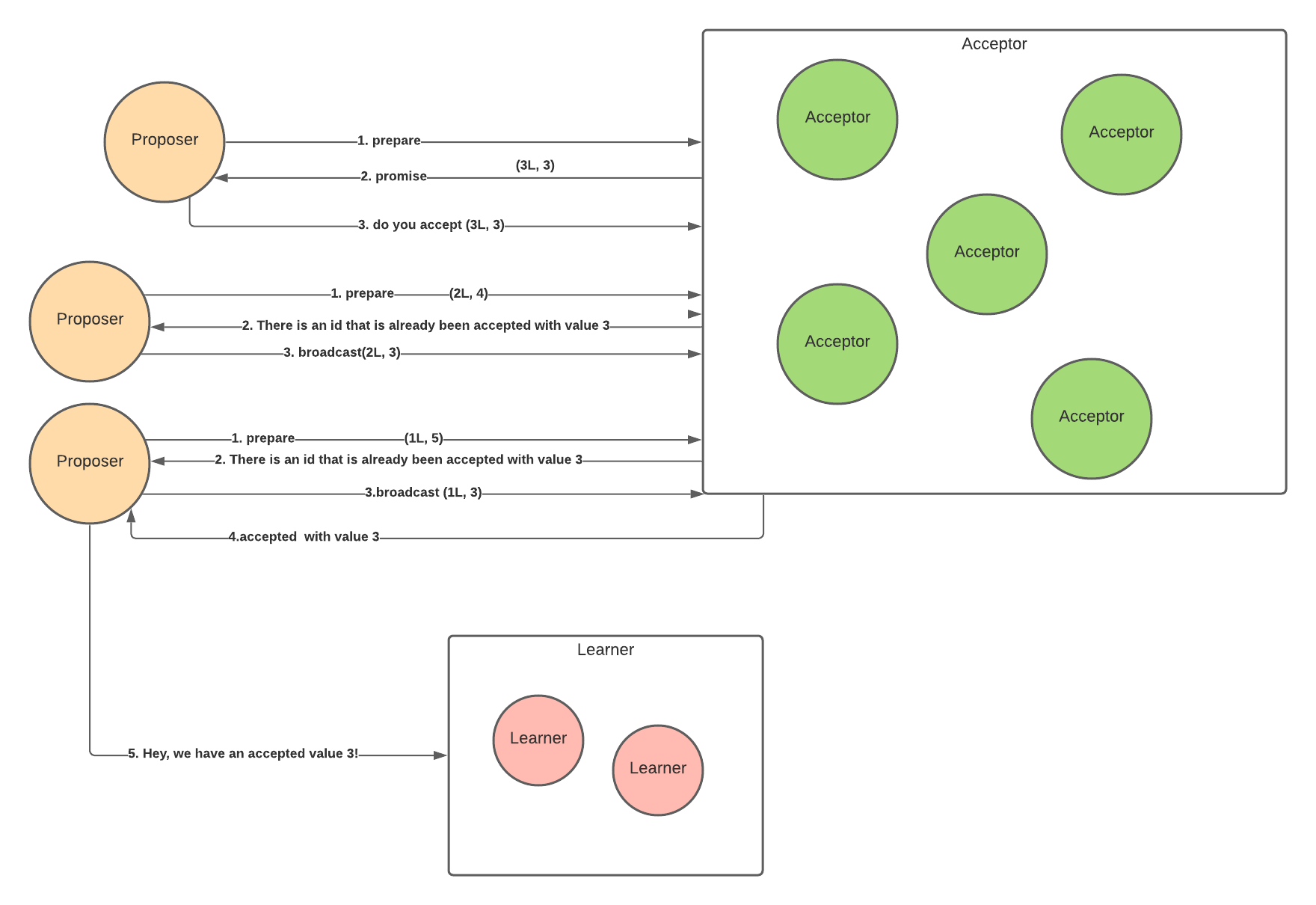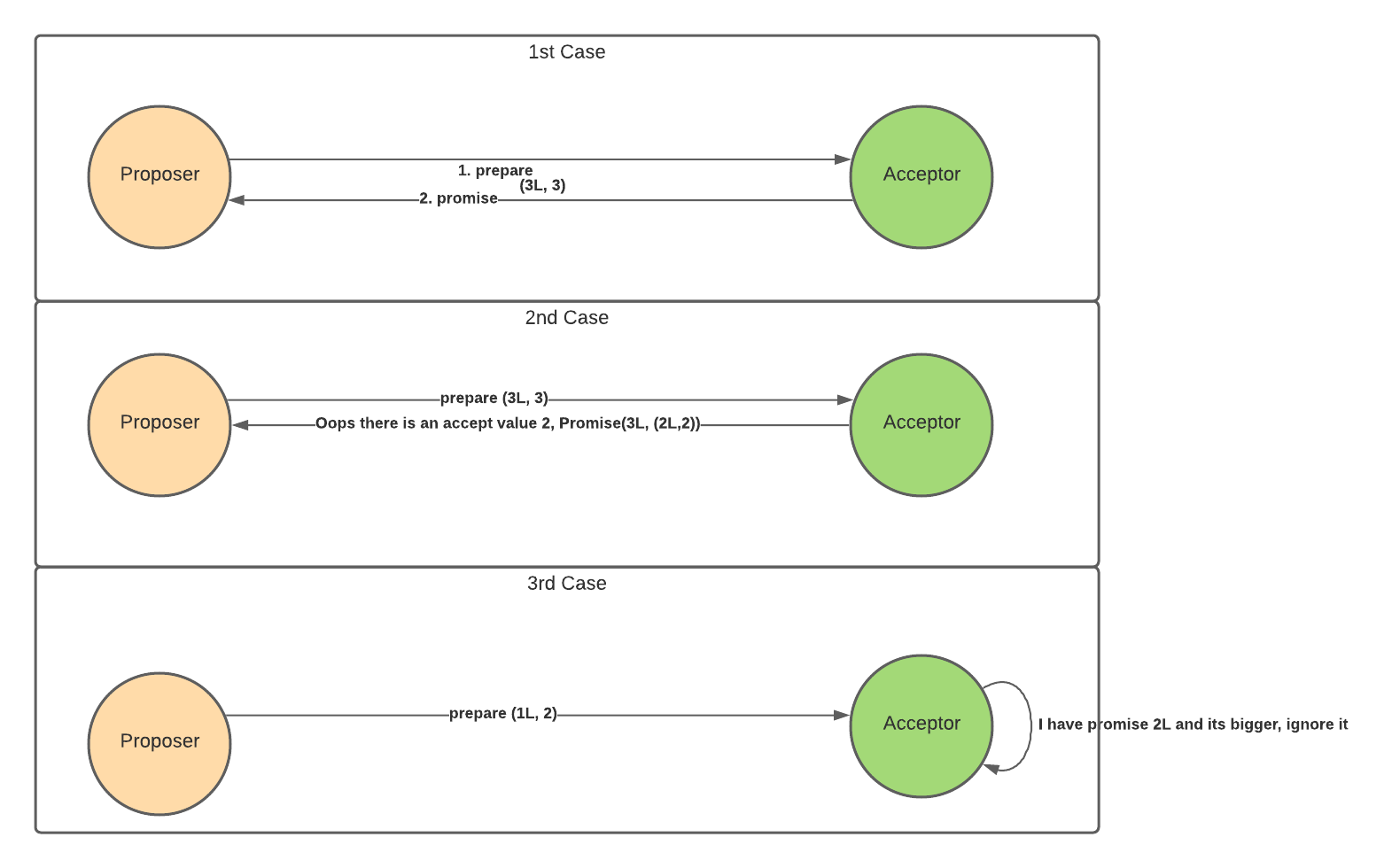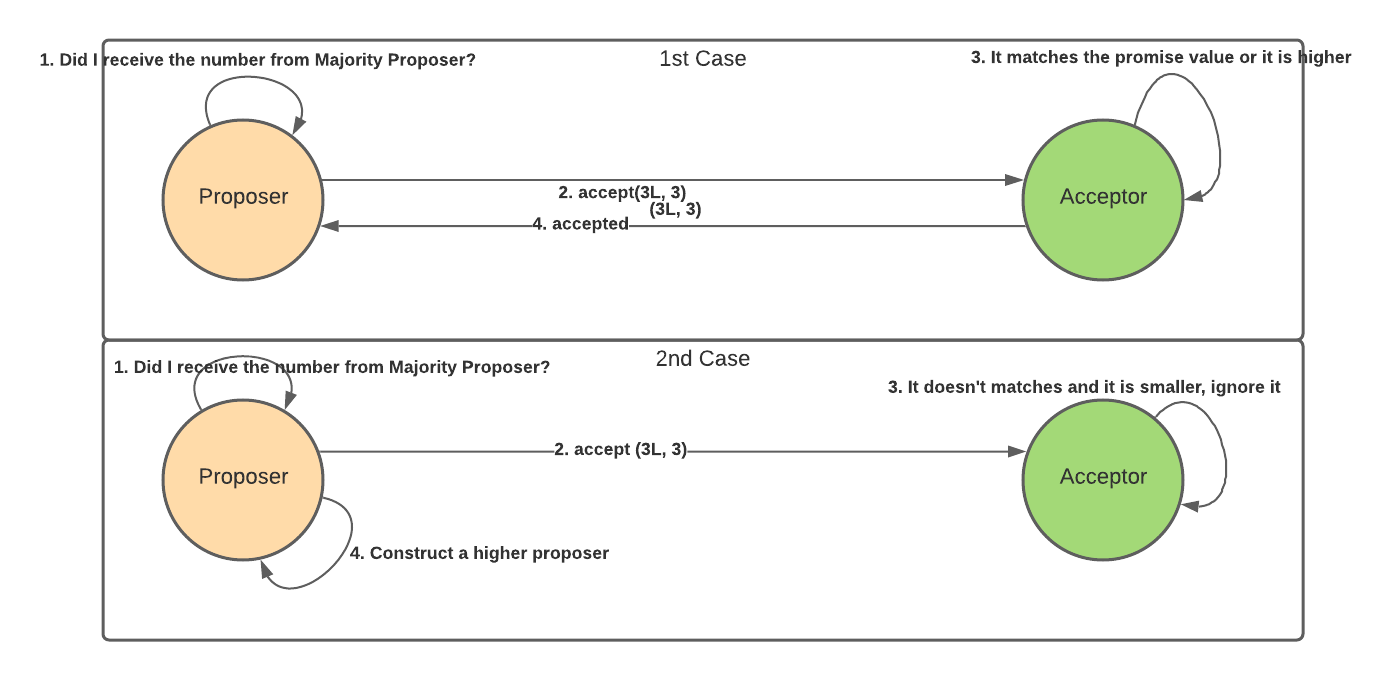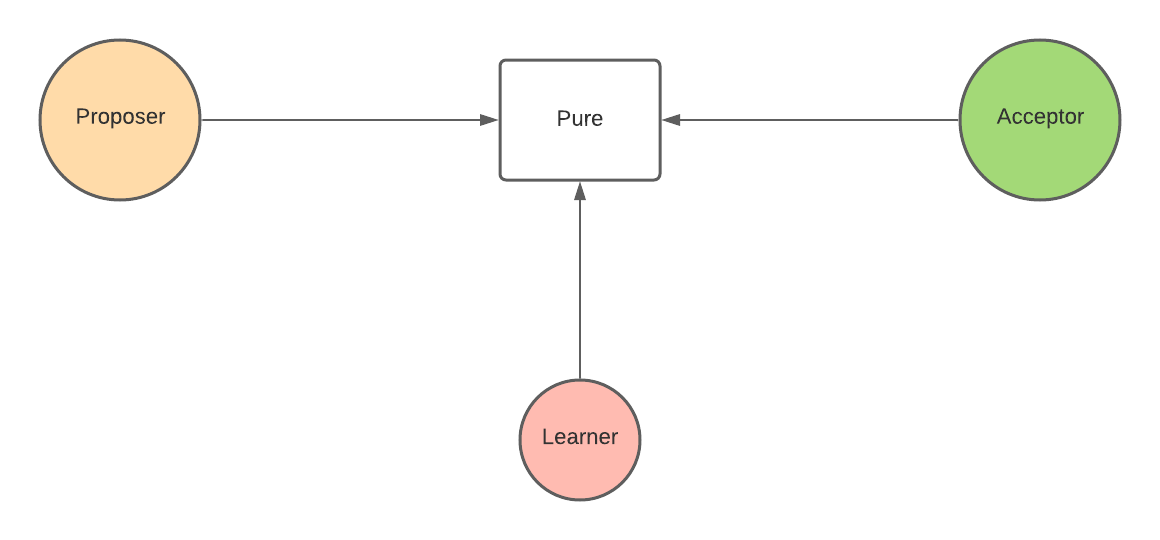Imagine that you are on a football team. After practice, the team loves to go out together and eat.
Let's say that the team usually wants to eat pizza or burgers. However, you want the whole team to go out to the same place after practice because it is more fun that way.
Therefore, you need to get the team to agree on the football field where everyone is going – getting burgers or pizza.
But there is one problem: the coach went home early. Everyone is exhausted and hungry after the practice, so they got easily distracted and want to come to a decision fast.
Moreover, you cannot yell at the football field because the entire team tends to talk really loudly, and your suggestion might be easily overwritten by another person.
You must be thinking, "There is only one way that I can achieve this agreement – through person-to-person communication, and want everyone to achieve a consensus."
How are you going to solve this?
This analogy is the same problem that we encounter in distributed systems, but you are dealing with many servers this time. We want to make many servers agree on common events or common information in an asynchronous environment.
You can use many algorithms to solve the problems, and today we will talk about one of them: the Paxos Algorithm.
Paxos is one of the earliest published papers about this distributed consensus algorithm that runs rounds and rounds of times to help many servers agree on a value proposed by a group member.
The algorithm uses peer-to-peer communication, where each peer can be in three roles, the proposer, the acceptor, and the learner. These roles don't have to be separated on each server – meaning a server can have the role of the learner, the acceptor, and the proposer at the same time.
Going back to the Football analogy above, for simplicity, we separate the three roles. Half the team can be the proposer, a quarter can be the acceptor, and a quarter can be the learner.
The proposer can propose where they want to go eat to the acceptor. The acceptor will have some criteria to determine based on each proposed value which place they will choose. Once the acceptor chooses the majority of the proposed messages, they will send it to the learner.
For instance, one of the acceptors elects a burger. They tell the learner that the majority of the team wants to eat burger. However, this is where it gets interesting: another acceptor elects a pizza, and they tell the learner that the majority of the team wants to eat pizza.
Therefore, it is up to the learner to announce based on the message they receive from all the acceptors what the majority really wants to eat. The algorithm will keep running multiple iterations until the learner announces the consensus.
I will explain the Paxos algorithm later in this article in more detail along with its implementation. By the end of this article, you will know how a replication state machine in a distributed system really works and the main algorithm used in the Chubby protocol.
Before we start
In this article, we won't discuss the "why" and the steps the algorithm goes through to reach consensus. If you are interested in why the Paxos Algorithm works, you can look at a great brief introduction in this Google Tech Talk.
Secondly, I assume that the proof and the theory works, and this article will be mainly about the implementation.
A Brief Introduction to the Paxos Algorithm
There are 3 roles in the Paxos algorithm – the proposer, the acceptors, and the learner.
The proposer will propose a value by sending messages to another member of the group.
Acceptors will accept the proposed value.
The learner learns whether the group has reached consensus in a particular round of the algorithm.
The Paxos Algorithm takes in two phases (the prepare phase and accept phase) as follows:

The Prepare Phase
Each group's proposers select a proposal number and send a prepared request to the system's acceptor. The message doesn't need to be received by all of them. It just needs to be the majority (a quorum) for the algorithm to proceed.
The acceptor who receives this message will make a comparison with the current highest proposal number. If the incoming request is higher than the proposal number, it will accept and sends a hopeful message back saying to the proposal, "okay, your proposal is higher than what I currently have, so I will choose you."
If the acceptor already accepts a message, it will send the same thing, except it will say, "okay, your proposal is higher than what I currently have. However, I have already accepted a message proposal. I'm going to attach that proposal number and value in the message too."
If the acceptor receives the message with a lower proposal number, it will simply ignore it.

The Accept Phase
If the proposer receives a majority's promise response, it will check if any promised messages have an accepted message. If it has an accept message, the proposal will accept the message to send the accept request to the processor again.
Suppose the proposer doesn't receive responses from most acceptors to which it broadcasts its message. In that case, it will simply assume that "my proposal number is not high enough, I'm going to create a higher proposal number and broadcast it again to the acceptor."
If the proposer receives responses from the majority of the acceptors, it will inform the learner that it has reached a consensus.
Suppose an acceptor receives an accept request with the proposal number equal to its promises. In that case, it will send back a confirmation to that proposer that the proposal value is accepted.
If an acceptor receives an accept request with the proposal number less than the prepared request, it simply ignores it.
On the learner side, once it receives the majority (quorum) of value coming from the proposal, it will mark that it has reached a consensus.

In theory, it sounds simple. However, in practice, it has lots of cases that need to be accounted for. A couple of papers talk about their experience in implementing Paxos in their production systems.
I saw many sources implement Paxos based on an object-oriented language, such as the Java implementation or implementation with the actor system. So I thought, "why not try to implement one in functional programming terms?"
Please note that this implementation is based on the Paxos-made simple algorithm paper. It doesn't have any fancy invariant such as an account for machine failure, leader election, and so on. This implementation also implements a single-round basic Paxos algorithm.
The Challenge
Model Construction
The essence of the Paxos algorithm is communication between nodes. Therefore, it will be the most intuitive to model the role as objects.
Since it mentions how proposers, acceptors, and learners interact, an actor system is the easiest way to create the algorithm. We can have 3 actors and encapsulate the logic and state within the actors.
Immutable State Management
This can be a challenge if we want to implement something immutable by nature because the algorithm requires a constant change in the internal state.
Object-oriented programming can encapsulate the state management for proposers, acceptors, and learners. On each of these phases, we can mutate the state inside each instance.
For instance, an acceptors instance can have a max_id as a mutable internal state, and it can change the max_id if it receives a prepared message that contains a higher id number.
How to Implement the Paxos Algorithm Functionally
Let's discuss how to implement the Paxos algorithm functionally, and how to design that implementation. I will use Scala and leverage the cats' data library to not reinvent the wheel of creating its own monad instances and its law.
Domain Models
Let's start with each of the domain models. The simplest way to do this is to visualize what the proposer, acceptor, and learner needs.
Proposer Model
The proposer will consist of a value, a proposal number, and a quorum size. The proposal number needs to be unique and in increasing number. The common way to implement this proposal number is an id with a machine-id to ensure uniqueness.
The compare statement is equivalent to a Java comparator where you can check if one is equal to another.
The quorum size is the number of nodes in the system.
Acceptor Model
The acceptor consists of a promise proposal number and the proposal number and value it accepts. Since those two values might not exist, let's make them optional.
Learner Model
The learner needs to keep track of all the accepted responses that it receives and check if the incoming value is over the majority. Therefore, it needs to have a key-value mapping to keep track of those counts.
The key will be the accepted value, and the value will be the number of counts. To know the majority, it needs to have the quorum size. Also, there needs to be a way to chose a value when it is above the majority.
Therefore, the learner will have a quorum size, a mapping for accepted values so far, and the final value that is chosen.
Usually, in OOP, we will put the functions inside the model, and its function will mutate the state of the model.
Functionally, I decided to separate the functions into their own object, Ops, that can interact with the proposer. These separate the model and the operation so that we separate the concerns on state mutation.
Messages
Next, we will think about the message type to communicate for each two-phase algorithm. There are four message types total:
messagePreapremessagePromisemessageAcceptmessageAccepted
Let's combine these messages as a sealed trait.
Since an acceptor possibly has not accepted any proposal when responding to a promise request, we will use an Option type to embed the AcceptedValue in the Accept message.
Action
One of the benefits of implementing Paxos or any other consensus algorithm in pure functions is that we start thinking of putting all the side effects IO in one component.
There are many ways to push IO's boundary to the end of the world. However, one easy way to do this is to change the statement into a value.
Therefore, we will define an Action type in the implementation. This Action type will be a value type that describes any impure side effects required by the protocol.
For instance, in Paxos, the protocol's side effect sends messages to other machines and processes. Therefore, this action type contains Broadcast and Send, which will broadcast the proposer either the acceptor group or the learner group.
Therefore the Action co-product will have something like this:
How to Create a Pure Message Handling Logic
Once we separate the algorithm's impure effects, we can focus on the algorithm's core state management.
How do we manage to have state management without mutation?
One way to do this is that each function will be wrapped in a State monad. A state monad is a monad that takes in the previous state, and it returns a new state with some results.
If you are not familiar with it, check out my previous blog post about state monads here.
Therefore, we can have a function that has a wrapper of State[Proposer, Action], which translates to Proposer => (Proposer,Action).
To simplify the design, I created three Ops objects – ProposerOps, AcceptorOps, and LearnerOps – to simplify the implementation's design.
This kind of design is influenced by how the actor system or object-oriented way of implementing the algorithm separates each of the operations inside the role's object. The code is more modular and clean this way.
Each of the function operations inside the Ops object class will do the action to mutate the role.
For instance, let's take a look at the prepare phase on the acceptor. The acceptor receives the PrepareMessage and evaluates if the proposalId is the current max proposalId seen so far.
If the proposalId is the max proposalId seen so far, it will reply back with a PromiseMessage. If the value is less than the current max id, it will ignore it.
Therefore, most of the functions will have function definitions like this:
With this, the algorithm's core logic becomes stateless – it doesn't really care about each machine's internal state and process.
We have created pure state management. This makes testing and debugging the Paxos algorithm easier. The important part here is that the Action method can be carried out by some other functions outside of the Paxos Algorithm to call those side effect calls.
In Closing
We just implemented a Paxos algorithm in a pure Functional style. This can be quite hard to implement because the algorithm in the paper is a stateful algorithm. You need to keep track of each state to reach a consensus.
Nevertheless, we take the approach to separate all algorithms into two logics – the impure functionality and core state management.
Separating the IO and the core state management logic in the algorithm is the biggest advantage to make the algorithm testable even in the concurrent environment.
Further, we make each message handling logic as stateless as possible – each call can finish without consulting any internal states of each machine or process.
Lastly, constructing all your algebra and all the messages that it needs at the beginning really helps shape implementing the algorithm itself.
The rest of the code implementation is in this GitHub here.
If you are interested to learn more about the Paxos algorithm and implementation, you can check out these resources:
- scala-composable-paxos/Learner.scala at master · cocagne/scala-composable-paxos · GitHub
- Understanding Paxos
- Paxos in Haskell
Thanks for reading! If you enjoyed this post, feel free to subscribe to my newsletter for more posts like it.

